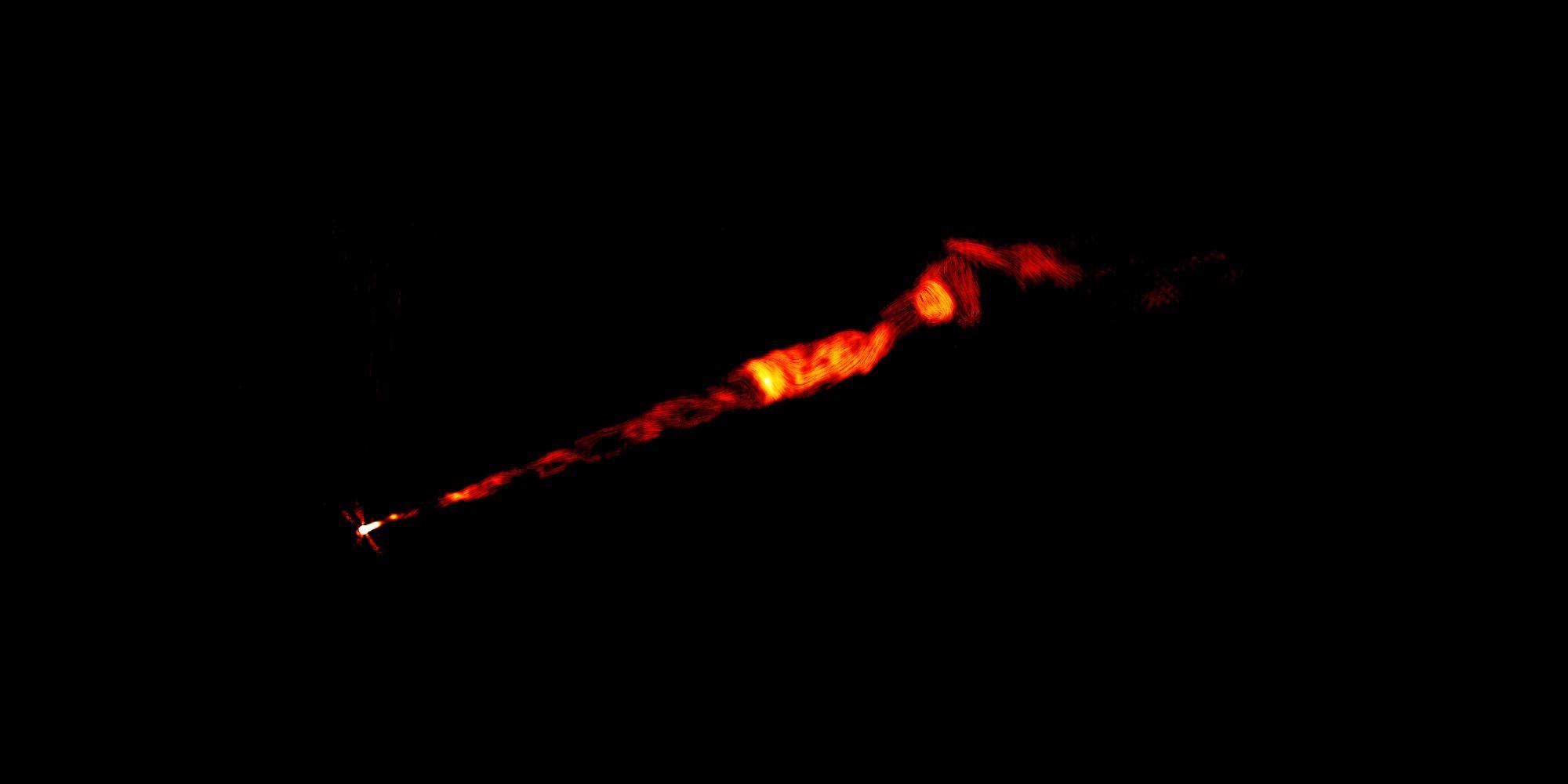Using the National Science Foundation’s Karl G. Jansky Very Large Array (VLA), astronomers have demonstrated that a jet of material driven from the core of a massive galaxy is directed by a corkscrew-shaped magnetic field out to approximately 3,300 light-years from the galaxy’s principal supermassive black hole.

Image Credit: Pasetto et al., Sophia Dagnello, NRAO/AUI/NSF.
That is much further than the earlier detected magnetic field in a galactic jet.
By making high-quality VLA images at several different radio wavelengths of the galaxy Messier 87 (M87), we were able to reveal the 3-dimensional structure of the magnetic field in this jet for the first time. The material in this jet traces a double helix, similar to the structure of DNA.
Alice Pasetto, Study Lead and Astronomer, National Autonomous University of Mexico
M87 is an enormous elliptical galaxy approximately 55 million light-years from Earth. A supermassive black hole about 6.5 billion times more gigantic than the Sun prowls at the center of M87. That black hole was the first to be ever imaged — a feat achieved with the worldwide Event Horizon Telescope (EHT) partnership and reported in 2019.
During the initial months of this year, new EHT images outlined the magnetic field in the surrounding area of the black hole event horizon.
Pasetto and her colleagues used the VLA to expose information of the magnetic field by outlining the polarization, or alignment, of radio waves discharged from it, and by quantifying the field’s strength across various parts of the jet. Their monitoring, carried out using the VLA’s widest configuration that offers maximum resolution, created very comprehensive images of the galaxy’s jet.
Helical magnetic fields are expected close to the black hole, and are thought to play a highly important role in channeling the material into a narrow jet, but we didn’t expect to find such a strong helical field extending so far outward.
Jose M. Marti, Astronomer, University of Valencia
The magnetic field is estimated to become weaker as it gets further away from the black hole. But, the researchers proposed that uncertainties in the flow of material within the jet could render the magnetic field more ordered at the distances observed in the new VLA images. The uncertainties create regions of higher pressure which also compress the magnetic field lines.
The researchers think that this interaction between uncertainties in the flow and the magnetic field is what generates the double-helix structure illustrated by the VLA images. If this is occurring in the M87 jet, it probably also is occurring in similar jets from galaxies across the Universe, they said.
M87 is relatively near to us and its jet is very powerful, making it an excellent target for study. The clues it gives us can help us understand this very important and ubiquitous phenomenon in the Universe.
Jose L. Gomez, Astronomer, IAA-CSIC, Granada
The astronomers reported their findings in the journal Astrophysical Journal Letters.
The National Radio Astronomy Observatory is a facility of the National Science Foundation, worked under the cooperative agreement by Associated Universities, Inc.
Journal Reference:
Pasetto, A., et al. (2021) Reading M87's DNA: A Double Helix Revealing a Large-scale Helical Magnetic Field. Astrophysical Journal Letters. doi.org/10.3847/2041-8213/ac3a88.